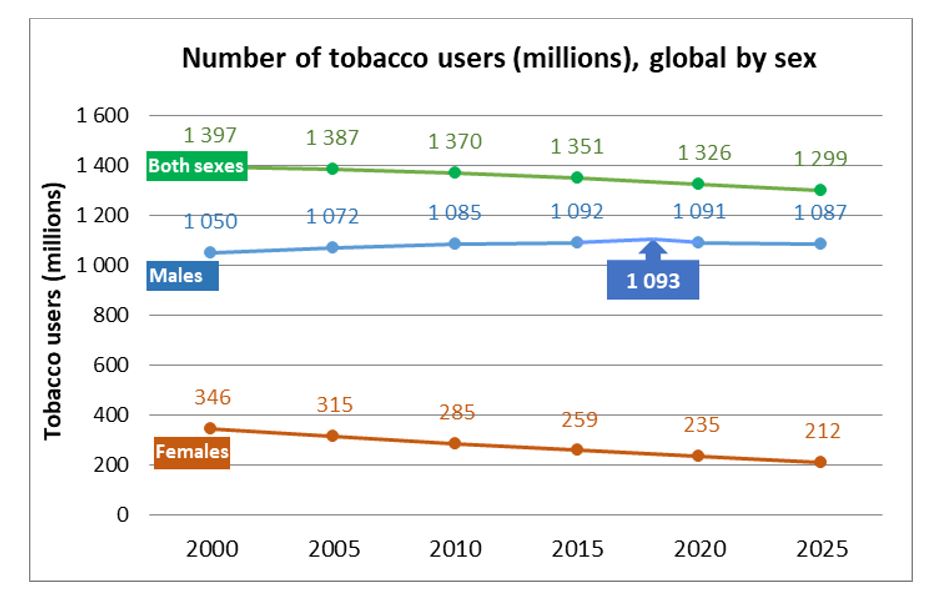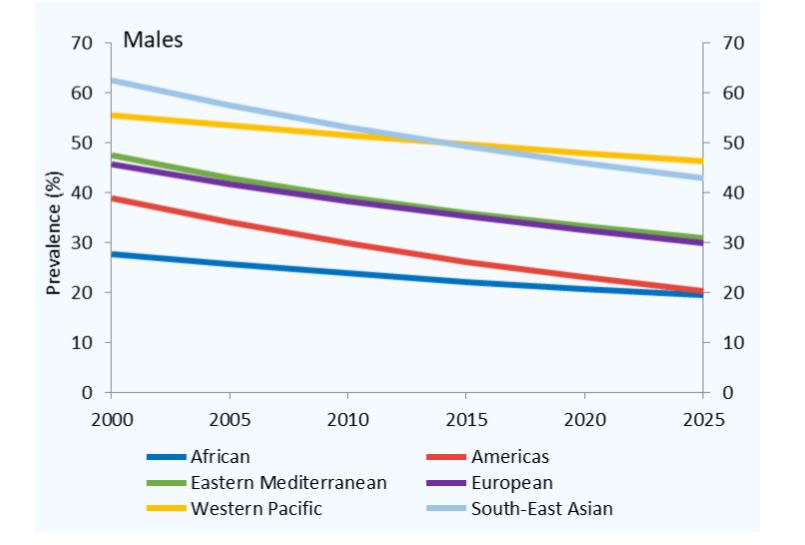20/12/19
China bucks global decline on tobacco use

By: Melanie Sison
Send to a friend
The details you provide on this page will not be used to send unsolicited email, and will not be sold to a 3rd party. See privacy policy.
[NEW YORK] While the world is beginning to buck an upward trend in tobacco use, the Western Pacific, including China, is showing no significant decline in tobacco consumption, says a report released this month by the WHO.
Global tobacco use has fallen from 1.4 billion in 2000 to 1.34 billion in 2018 or about 60 million people according to the report, largely driven by reductions in the number of female smokers. China, with at least 316 million adult smokers, has the world’s largest smoking population, accounting for 40 per cent of all tobacco consumption. At least 8 million people die each year from ailments linked to tobacco use, according to the WHO.
“China with more than 300 million tobacco users is not seeing any significant decline in tobacco use”
Vinayak Prasad, WHO
“China with more than 300 million tobacco users is not seeing any significant decline in tobacco use,” Vinayak Prasad, head of WHO’s Tobacco Control Unit, tells SciDev.Net. “This, coupled with limited capacity of low-income and low-middle income countries to implement MPOWER measures, has contributed to the weak progress in the [Western Pacific] region.”
According to a 2016 report by the Southeast Asia Tobacco Control Alliance), half of the 122.4 million adult smokers in ASEAN countries, home to 10 per cent of the world’s smokers, live in Indonesia (53.3 per cent). Indonesia also has the highest male smoking prevalence in ASEAN at 66 per cent and is one of the countries with the highest number of underage smokers globally. Indonesia is one of the few countries yet to sign and ratify the WHO Framework Convention on Tobacco Control.
According to Nina Samidi, the communication and media personnel of the National Committee on Tobacco Control (Komnas Pengendalian Tembakau), Indonesia, the high percentage of smokers in the country has economic implications on top of the health risks. In an interview with SciDev.Net, she says that the BPJS, the Indonesian government's public health insurance system, pays for the healthcare of indigent patients. “Most of them are cases caused by tobacco consumption such as stroke, heart disease and cancer," she says. "Unfortunately, the cost is very big so BPJS [is] almost broke.”*
Released 19 December, the WHO report says that by 2020, there will be 10 million fewer tobacco users than in 2018. By 2025 that number will drop by another 27 million people says the projection based on survey data from 1990 – 2018.



“For many years we had witnessed a steady rise in the number of males using deadly tobacco products. But now, for the first time, we are seeing a decline in male use, driven by governments being tougher on the tobacco industry,” Tedros Adhanom Ghebreyesus, WHO director-general, said in a statement.
Nonetheless, overall tobacco use in the Western Pacific region is on a downward trend, Kate Lannan, coordinator, Tobacco Free Initiative, WHO regional office for the Western Pacific, tells SciDev.Net.
“As the newly published WHO global report on trends in prevalence of tobacco use 2000—2025 shows, tobacco use in the Western Pacific region has declined from 30.9 per cent in 2000 to 26.9 per cent in 2015, thanks to implementation by many countries and areas in the region of best-practice tobacco control measures,” she says.
According to Lannan, all countries in the Western Pacific region now have legislation supporting smoking bans in some or all public places. Furthermore, the number of countries with strong graphic health warnings has tripled from five countries in 2008 to 14 countries in 2018.
However, policies still need to be tightened to bring down tobacco use. “In order to achieve a better outcome than projected, tobacco control actions need to be accelerated,” says Prasad.
Megan Quitkin, deputy director, policy-tobacco control, The Union, says that barring Australia and New Zealand, the Asia Pacific region has so far shown no real progress in bringing down tobacco use. “This slow progress can be attributed to a number of factors, but most notably, because of tobacco industry interference in fighting legislative bills to control smoking,” she tells SciDev.Net.
The Philippines is one of the countries that faces this problem.
“The Philippines needs to review and amend its tobacco control law. A very big problem there is the composition of the Inter-Agency Committee on Tobacco where the tobacco industry is represented in a committee that is supposed to regulate it,” says Jacky Sarita, managing director of HealthJustice Philippines, a non-profit think-tank that aims to bridge public health and law.
Indonesia is another country that has this issue. “Industry intervention to politics and policy in Indonesia is very common,” says Samidi. “The most important thing to eliminate tobacco use in Indonesia is to stop [the] tobacco industry's intervention in any law/issue; tobacco ads, promotion, and sponsorship ban; [and] raise the price [of tobacco products] as high as the tiny pocket can not afford.” According to Samidi, there are currently no policies regulating or banning tobacco product advertising, promotion, and sponsorship. The prices are another issue. “[They are] affordable to children and low-income people.”*
Samidi that the increase in use of e-cigarettes to be one of the possible explanations for the decrease in tobacco use in WHO's report. “[The report] is great and relief, of course, but we still have to be aware of other factors that might influence it, it is the immersion of e-cigarette, which [is beginning to be consumed] on a massive scale in various countries.”*
Youth, in particular, are more likely to use these products due to marketing campaigns targeting this demographic, says Lannan. “The bottom line is that ENDS are undoubtedly harmful, they should be strictly regulated and they must be kept out of the hands of children.”
According to Quitkin, the e-cigarette market — which has already gained foothold in the US and Europe — is still in a nascent stage in the Asia Pacific region. It was valued at about US$840 million in 2017.
“E-cigarettes have a terrifying potential to derail all of the progress made over this time period and, even worse, create brand new epidemics. We are deeply concerned by their rapid rise in popularity and the way in which their advertising blatantly targets young people,” says Quitkin. “If e-cigarettes are introduced into countries with high tobacco usage and insufficient tobacco control policies, these countries will have twin epidemics on their hands and two major problems to address.”
This piece was produced by SciDev.Net’s Asia & Pacific desk.
*This article was revised on 25 December 2019 to include the inputs of Nina Samidi, National Committee on Tobacco Control (Komnas Pengendalian Tembakau).














